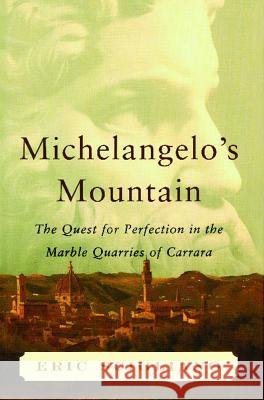Michelangelo's Mountain: The Quest for Perfection in the Marble Quarries of » książka
Michelangelo's Mountain: The Quest for Perfection in the Marble Quarries of
ISBN-13: 9781451656619 / Angielski / Miękka / 2012 / 368 str.
No artist looms so large in Western consciousness and culture as Michelangelo Buonarroti, the most celebrated sculptor of all time. And no place on earth provides a stone so capable of simulating the warmth and vitality of human flesh and incarnating the genius of a Michelangelo as the "statuario" of Carrara, the storied marble mecca at Tuscany's northwest corner. It was there, where shadowy Etruscans and Roman slaves once toiled, that Michelangelo risked his life in dozens of harrowing expeditions to secure the precious stone for his "Pieta, Moses, " and other masterpieces.
Many books have recounted Michelangelo's achievements in Florence and Rome. "Michelangelo's Mountain" goes beyond all of them, revealing his escapades and ordeals in the spectacular landscape that was the third pole of his tumultuous career and the third wellspring of his art. Eric Scigliano brings this haunting place and eternally fascinating artist to life in a sweeping tale peopled by popes and poets, mad dukes and mythic monsters, scheming courtiers and rough-hewn quarrymen. In showing how the artist, land, and stone transformed one another, Scigliano brings fresh insight to Michelangelo's most cherished works and illuminates his struggles with the princes and potentates of Carrara, Rome, and Medici Florence, who raised intrigue to a high art. He recounts the saga of the "David, " the improbable masterpiece that Michelangelo created against all odds, of the twin "Hercules" that he tried to erect beside it, and of the Salieri-like nemesis who snatched away the commission, turning a sculptural testament to liberty into a bitter symbol of tyranny and giving Florence the colossus it loves to hate.
Scigliano plumbs the Renaissance archives, uncovering previously unpublished and untranslated documents, and trolls the earthy cantinas of Carrara, where old "cavatori" who wrestled giant blocks from the mountains by hand recount the miseries and glories of a vanishing heroic age. He takes readers along with another sojourner, the exiled poet Dante Alighieri, who drew his visions of Hell and Purgatory partly from the surreal panorama of Carrara's quarries. Interweaving art, architecture, science, politics, folklore, and even quarry cuisine, he traces the mystique of marble and the magic of the stone carver's art from prehistory to the present, and shows how they culminate in the triumph and tragedy of Michelangelo's Pygmalion-like quest to bring life out of stone.











